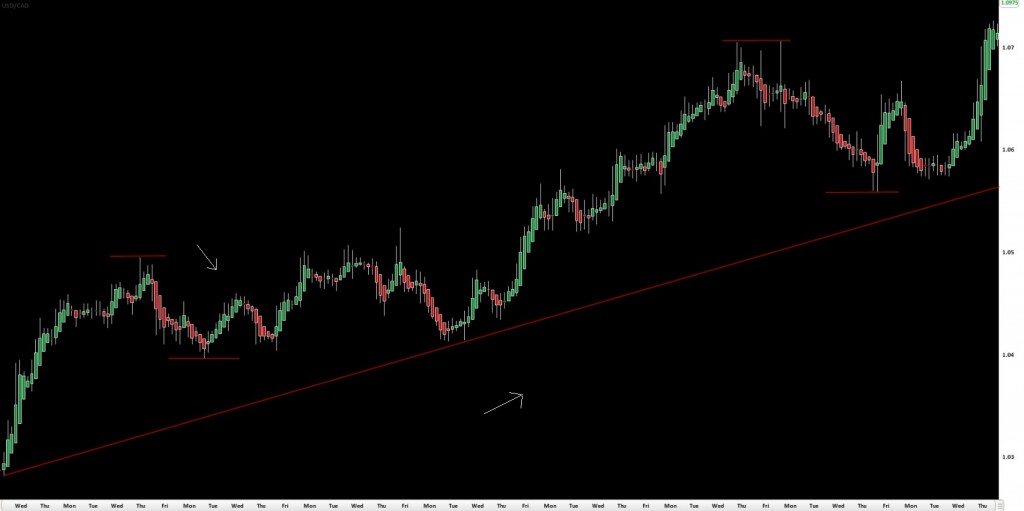Retracements
This lesson will cover the following
- A definition for a retracement
- What information can they provide?
- Can they be measured with the use of exact percentage?
As we already said, a trend rarely follows a straight line without including a series of smaller trends. These smaller countertrends are known as retracements.
Definition
A retracement represents a temporary reversal in the direction of prices, which goes against the major trend. It is also called a correction to the principal trend. Retracements and reversals should be distinguished. Retracements are usually short-term changes within the major longer-term trend, while reversals signal the end of the larger trend and the beginning of a new trend.
During a significant uptrend the rise in prices is interrupted periodically by downward corrections. The beginning of these corrections is usually a resistance point, while the bottom is usually a support point. A retracement is a smaller trend itself and runs in the opposite direction to the major trend.
On the 4-hour graph of USD/CAD above we can see a large (major) uptrend with a number of small countertrends.
Retracements can be very informative
Within a trend, many retracements of different magnitudes and time periods can occur. As the end of a correction is marked by the support or resistance point (depending on the trend direction) for the longer-term trend, the length and time of this correction can reveal us something concerning the longer trend.
In a sharp uptrend we can expect that retracements may be short and may not retrace a huge percentage of the prior climb. A general rule is that if a trend appears to be rising strongly, then retracements may be less than 50% of the previous uptrend. This is also valid for downtrends.
In case the retracement in an uptrend extend its decrease to more than 50%, then the trend line in the longer uptrend would become irrelevant. Therefore, the amount of a retracement provides an indication of what the strength of the larger trend is.
A retracement occurring in a still existing trend can provide a trader, who missed the earlier stages of the trend, with the opportunity to ride the longer trend. In case the retracement continues to hold above the longer-term trend line and continues not to retrace more than 50%, this situation is an opportunity for a trader to act in the direction of the longer-term trend.
Exact percentage?
In reality retracements rarely reach a specific percentage. There are analysts, however, who believe that retracements measured in percentages can provide a good point to enter into a trade. In an uptrend or downtrend prices tend to retrace a specific percentage. Those mentioned the most are 33 1/3%, 50%, 66 2/3% and the famous Fibonacci percentages – 38.2% and 61.8%. We shall discuss the so called Fibonacci retracements at a later time.
